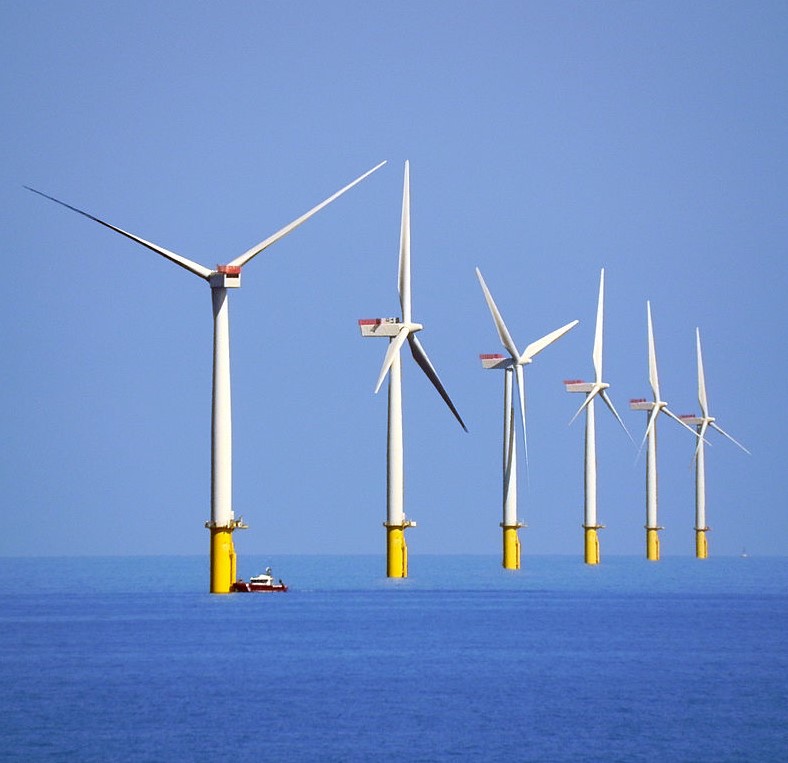Mike Downham reviews ‘Who wields the welding rod’ recently published in the London Review of Books
It’s impossible to do justice here to James Meek’s 12,000 word piece “Who holds the welding rod?” (LRB 15th July).
This exceptional investigation took journalist Meek to Hull, Campbeltown and remotely (because of Covid) to Vietnam through a Vietnamese researcher. The piece is threaded with the bitter experiences of many individual workers and an intimate account of the Campbeltown community’s past and present predicaments.
The story starts with a vivid picture of the voyage of a German-owned cargo ship loaded with wind towers which had left the Vietnamese port of Phu My in early April last year, arriving more than a month later in Hull.
The towers are massive. The hollow tapered columns, made of thick painted steel, are designed to be attached to the sea-bed, raising the turbines high enough above the sea for clearance of their huge blades. They are hundreds of feet tall and weigh hundreds of tonnes.

This shipment was destined for Hornsea Two in the North Sea, which will be the largest offshore windfarm in the world, scheduled to be operational next year.
The towers were made in a factory in Phu My by the Korean company CS Wind. The towers for Hornsea One were made by a CS wind factory in Campbeltown. CS wind doesn’t have a factory in Korea. Instead it has factories in Vietnam, Taiwan, Malaysia, China, Canada and Scotland (Campbeltown). It’s really one vast international factory. The factories in both Canada and Scotland have been closed down because CS wind said they couldn’t make a profit. In the year or so before closure working conditions in the Campbeltown factory deteriorated to such an extent that serious accidents, some of them permanently disabling, became common. Then 100 jobs were lost from a small remote town which offers few other employment opportunities.
The Scottish Government had made it attractive for CS Wind to start a factory in Campbeltown, though it could have invested instead in an available Scottish company. They chose the cheaper investment of a Korean company, knowing full well that the reason it was cheaper was that CS Wind pays its workers less and works them for longer hours. The jobs it provided people in Campbeltown, more like slave labour than jobs, lasted less than three years.
CS wind may sound powerful but it’s at the bottom of the pyramid of control in the wind industry. At the top are the project developers, who put up the money – companies like Orsted (controlled by the Danish government) and SSE (London-listed, Scotland-based). The project developers contract engineering companies to manufacture and install the turbines. In Europe and much of the world the dominant engineering players are Vestas (Danish) and Siemens-Gamesa (German-Spanish), both of whom manufacture the blades and the turbines themselves because they are high-value, and contract out the rest, including the wind towers.
Are the conflicting goals of cheap green energy, free trade and secure well-paid jobs irreconcilable? At one point Meek thinks they are. But later he says:
It shouldn’t be more important that the North Sea wind farms get built than that some of their towers are made by low-paid labourers working twelve-hour shifts, seven days a week; and yet the immense utopian project to decarbonise human activity forges ahead, while the equally utopian project to end the setting of ‘low income country’ worker against ‘high income country’ worker barely exists. The mad dream of a green energy transition might just be starting to come true, with much of the credit due to stubborn activists, clever engineers and a handful of far-sighted policymakers. But it is also happening for the unlikely reason that it has been redefined as a global capitalist-consumerist project. It realises utopian goals while simultaneously keeping stock-markets ticking over, making the rich richer and spreading a general sense of virtue. The system has been able to turn the green energy transition into a set of products – electric cars, solar panels, wind turbines – but the transition to a world of better-treated workers involves systemic changes that are the antithesis of commodification.
We have an internationalist movement to save humanity from climate. But we also have an internationalist movement to save humanity from capitalist exploitation. For the latter movement to win the struggle, as Meek concludes, a world factory like CS Wind’s demands a world trade union.
